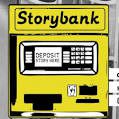Once upon a time, there was a little girl named Goldilocks. She liked to give away money.
One day Goldilocks went exploring the forest of letters, email, and online posts she received. She found herself in the house of three nonprofits. She sat down at their table and sampled what they were offering.
She tasted the first nonprofit. “Oh, this is too hot!” she exclaimed. The nonprofit was sending her something every day, and all of it was peppered with funding appeals.
She tasted the second nonprofit. “This is far too cold,” she realized. The nonprofit was communicating with her only when it was asking for money. And by the time she received a thank-you letter, she’d reached the bottom of the bowl. She had no appetite for any more donations.
Goldilocks tasted the third nonprofit. “Ahhh,” she breathed. “This is just right!” Here was the porridge she’d been looking for. The main ingredient was content that pleased her palate, spiced with a healthy dash of humor and with nuggets of information to chew on. The funding appeals had absorbed the flavor of the dish and went down smoothly.
“Someone’s been eating my porridge,” Goldilocks heard a voice say. There was the Communications Director of the third nonprofit, smiling. And behind her was the Development Director, asking “Would someone like to sit in my chair at my next event?”



